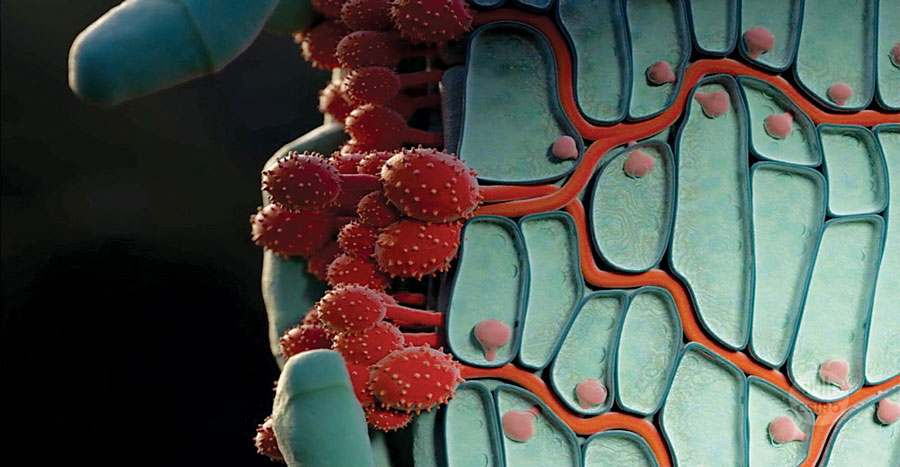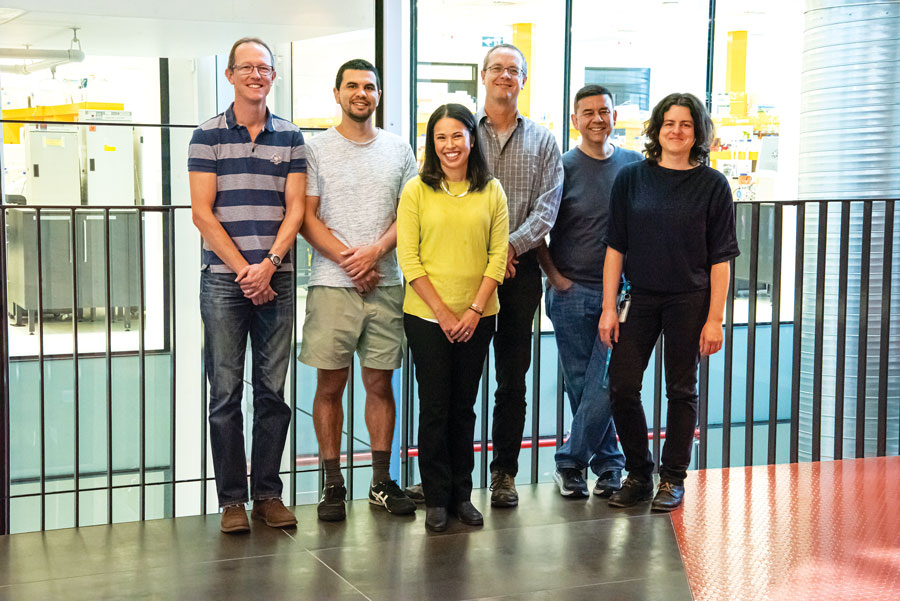Keeping cereal crops free of rust disease relies on a decades-old surveillance system in which plant pathologists run diagnostics on plant samples from across Australia. Now, the toolkit available to process those samples is being expanded by researchers at the CSIRO, led by Drs Peter Dodds and Melania Figueroa.
In a world-first breakthrough, the CSIRO team has developed the genetic resources needed to establish a rapid, high-throughput and DNA-based rust-monitoring system that can track changes in pathogen evolution and even anticipate a breakdown in resistance in wheat crops.
The new method mines a wealth of data about the rust genes responsible for initiating infections. These are called ‘virulence genes’, and the proteins encoded by these genes are secreted by the fungus to gain entry into plant cells. The plant defends itself by producing ‘immune receptors’.
Dr Figueroa explains that if the plant makes an immune receptor capable of binding to the fungal virulence protein, it can then mount a defence response that fights the infection.
However, rust pathogens are notorious for their ability to mutate their virulence genes and avoid detection by the plant. It is the mutated pathotypes that typically go on to cause epidemics by breaking down the resistance of commercial cultivars.
“Currently, we rely on a diagnostic system that must first isolate the pathogen from plant material and then test it by inoculating a genetically distinct panel of wheat lines and checking for disease,” Dr Figueroa says.
“That system allows pathologists to deduce the pathogen’s virulence profile, but it is time-consuming and limited in the amount of material it can process.”
To boost monitoring capabilities for rust disease, the CSIRO team set out to identify virulence genes as a basis for developing a DNA-based test to monitor the virulence profile of rust populations. The test functionally resembles the PCR (polymerase chain reaction) assay used to detect and type variants of COVID-19 spike protein.

Rust fungus attacking a plant stem. Source: CSIRO
Gene based analytics
Achieving a DNA-based breakthrough meant overcoming the immense difficulties associated with isolating the rust genes that encode the virulence proteins. Only once the genes are characterised can they be rapidly detected using PCR technology.
It took Dr Dodds’ CSIRO team 10 years to isolate the first stem rust virulence gene, with that work published in 2017. That achievement allowed the researchers to see what a rust virulence gene looks like at the molecular level, making it possible to identify other potential virulence genes with similar characteristics.
“What we have now done is publish a rapid way to pull out many more virulence genes based on the availability of the DNA sequence of the rust genome,” Dr Dodds says.
The team targeted the genome of stem rust in the first instance. They used the genome sequence to identify sequences that resembled potential virulence genes and then synthesised those genes chemically using well-established biotechnology methods. Those genes were inserted into carrier DNA that allows the gene to be expressed in plant cells. This expression mimics the secretion of the virulence protein by the fungus.
This stage of the project essentially created a library of 700 potential stem rust virulence genes. The whole library of synthesised genes was then introduced individually into plant cells (that were derived from wheat lines) using high-throughput methods.
Once the introduced genes are expressed by the plant cell, the presence of a virulence gene becomes detectable given that its expression will induce cell death (in the presence of immune receptors). This allows novel virulence genes to be quickly identified.
That the method works was confirmed when in a matter of a few weeks, the team successfully re-isolated the first virulence gene they had ever detected – the one that had previously required a decade to isolate.
“That we could re-isolate known virulence genes served to validate our new screening method,” Dr Figueroa says. “We then proceeded to identify additional novel genes.”

The CSIRO team involved in the new GRDC investment that is developing a method to rapidly identify rust virulence genes. From left: Dave Lewis, Dr Taj Arndell, Dr Melania Figueroa, Dr Peter Dodds, Dr Rohit Mago and Dr Jana Sperschneider. Photo: CSIRO
A new diagnostic system
GRDC has now invested in the next phase of development work. This entails using information from the isolated rust virulence genes to develop a DNA sequencing-based monitoring system.
PCR technology is especially suited to this monitoring task as it can type large quantities of materials very quickly and cheaply. That means rust spores from across wheat growing regions could be continuously profiled for virulence. Such a system could detect early signs indicating a likely breakdown in plant immunity.
Dr Figueroa says the system resembles the COVID-19 monitoring of spike protein, right down to the ability to anticipate consequences for different variants, such as the ability to escape vaccine immunity.
For rust, this diagnostic capability would amount to a world-first gain in biosecurity and is also the first time that pathologists can aim to get ahead of virulence mutations and anticipate rust evolution. It also serves to translate investment in pathogen genetics into novel diagnostic tools.
“This first phase of development work entails building up our knowledge bank of virulence genes and then applying this new gene discovery technique to other rust diseases,” Dr Dodds says.
“We can then use that information to design diagnostic tools based on tracking evolution and mutations in the DNA sequence of these genes.”
This emerging diagnostic technology is intended to complement traditional pathotyping infrastructure. It adds in a rapid typing capability that can process many more samples than currently possible. It results in quick snapshots about the virulence characteristics of spores in any one season.
That information can then be used to support on-farm decision-making, particularly around disease management strategies and selecting disease resistant characteristics of wheat cultivars based on the prevalence of previous seasonal rust pathotypes.
More information:Peter Dodds, peter.dodds@csiro.au; Melania Figueroa, melania.figueroa@csiro.au

























































